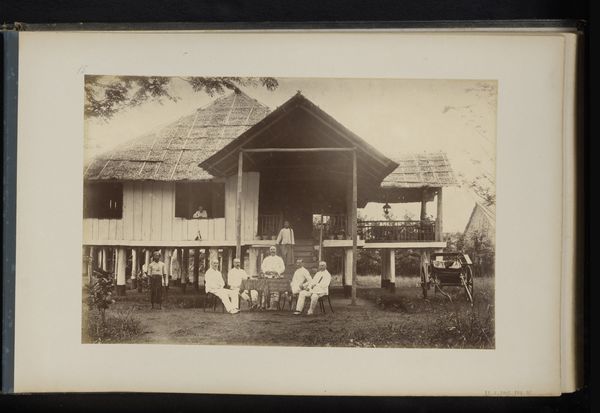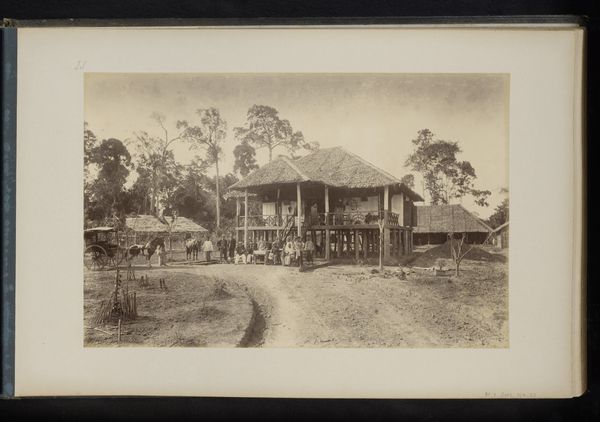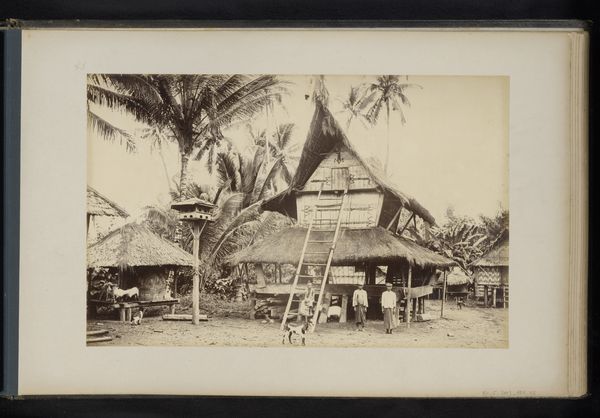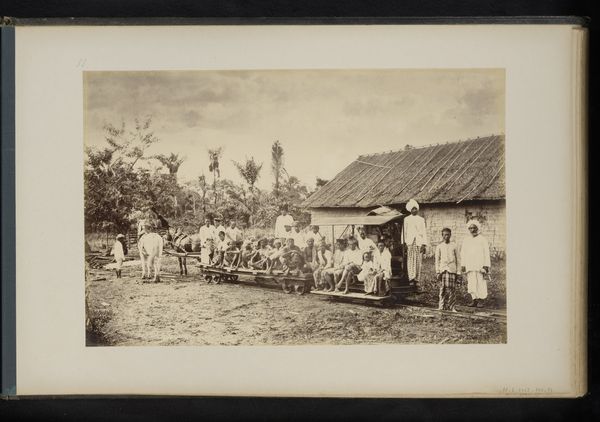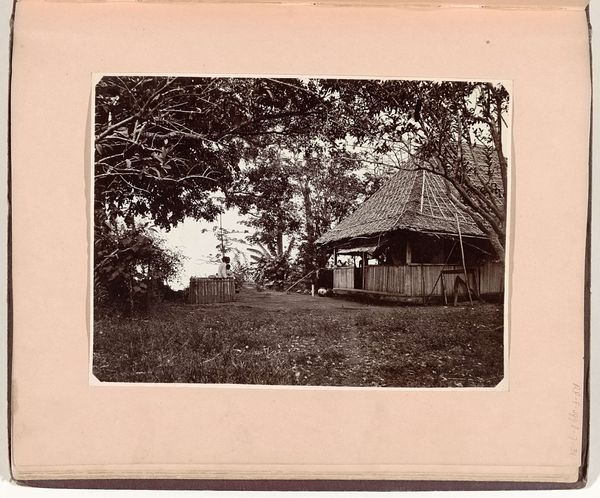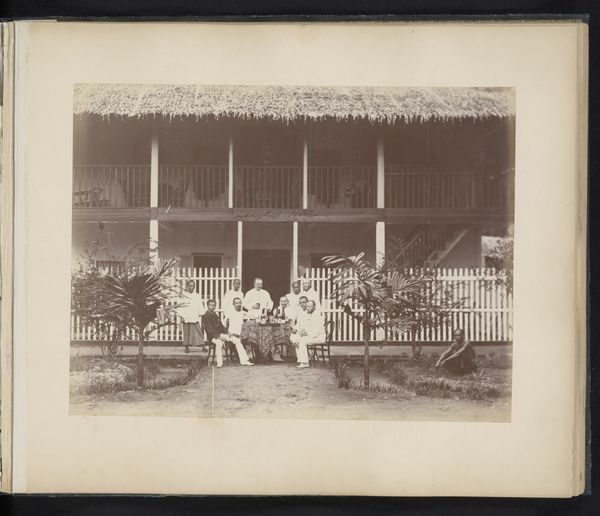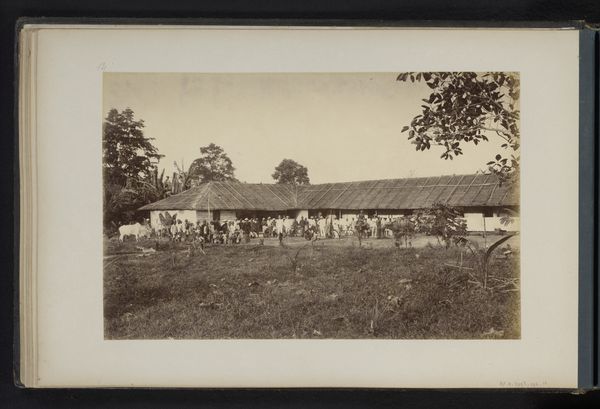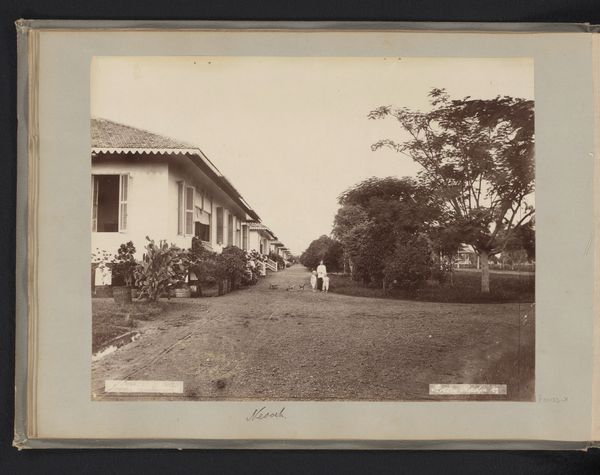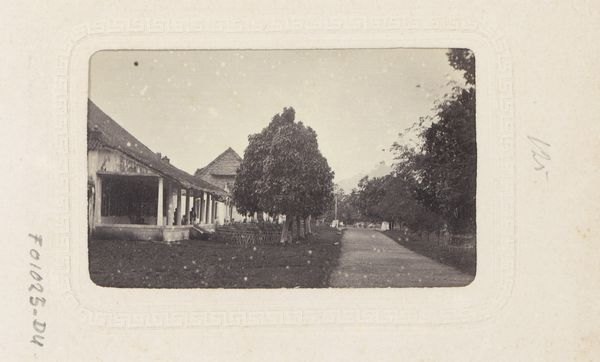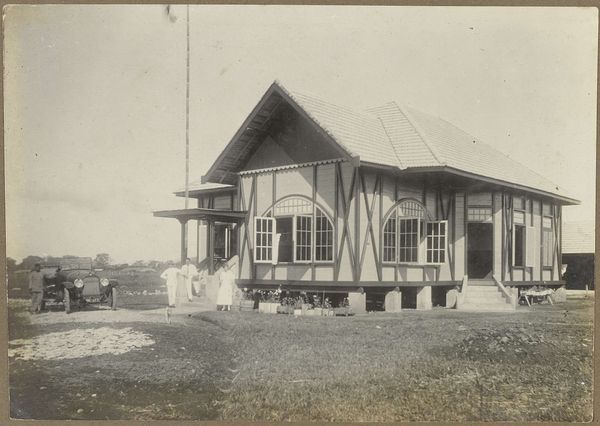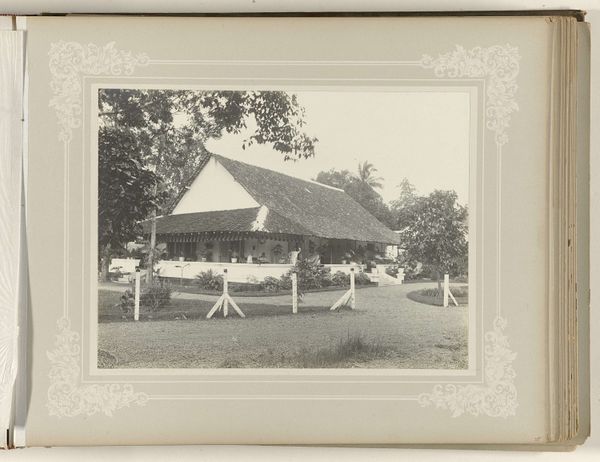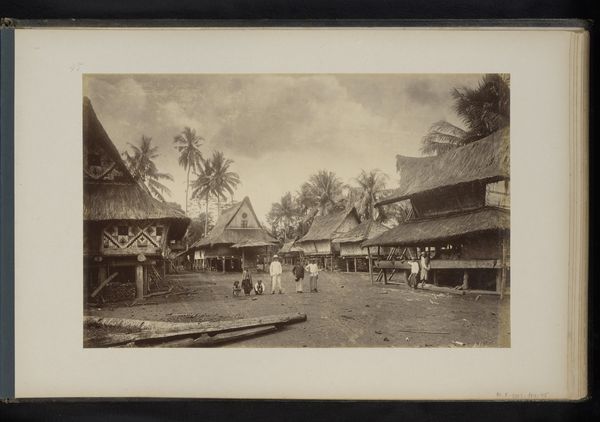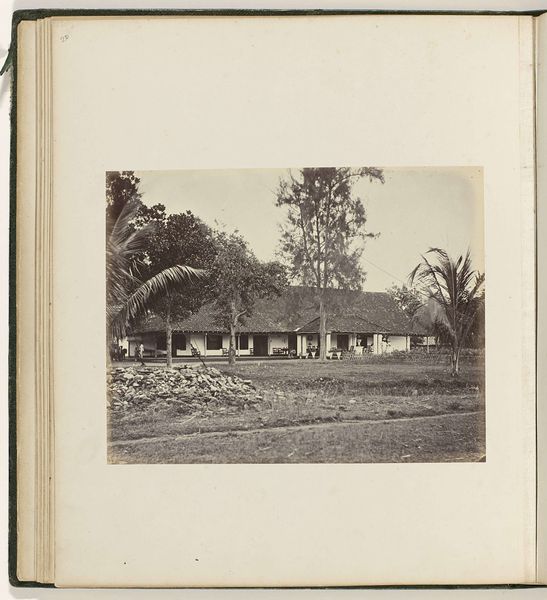
Gezicht op het huis van de assistenten op de Bindjai plantage, Sumatra c. 1890 - 1900
0:00
0:00
print, photography
# print
#
landscape
#
photography
#
orientalism
#
realism
Dimensions: height 242 mm, width 368 mm
Copyright: Rijks Museum: Open Domain
Curator: Looking at this photograph, I'm immediately struck by its stillness, almost a staged quality. Editor: Indeed. What we have here is titled "Gezicht op het huis van de assistenten op de Bindjai plantage, Sumatra," taken around 1890 to 1900, part of the Rijksmuseum collection. The photographers are Heinrich Ernst & Co. It gives us a glimpse into the colonial landscape of the time. Curator: The materiality interests me—the visible albumen print suggests a very particular production process. Consider the labor required to set up such a shot in that environment, process the image. And, of course, albumen, sourced from egg whites—the raw material literally encasing this scene. Editor: And it’s vital to think about how that environment and those labour relationships you mentioned are themselves constructed through visual representation. Look at the building, raised on stilts, likely to combat humidity and pests, yet constructed with clear markers of European style. This photograph isn't just a neutral recording; it’s actively shaping perceptions of colonial power. Curator: Absolutely. The construction of the house itself speaks to imported materials and building practices. The thatched roof juxtaposed with the Victorian-esque detailing on the veranda is particularly striking in highlighting that synthesis of available material with the imposed aesthetic. We can see the labor, and potentially the cultural exchange in those elements. Editor: Consider the function this image served at the time. Who was the intended audience? These images played a vital role in constructing a vision of the colony, shaping public opinion and legitimizing the colonial project back home. We, viewing it now, must actively resist such simple readings and consider that complexity of context. Curator: And further deconstructing that representation is necessary—unpacking the ways in which something seemingly objective, like a photograph, served to solidify existing power dynamics, through production of photographic materials and techniques. Editor: Precisely. Reflecting on its place within the history of photographic representation allows us to critically re-evaluate its content. It's an image prompting necessary and complex conversations about power and material.
Comments
No comments
Be the first to comment and join the conversation on the ultimate creative platform.
